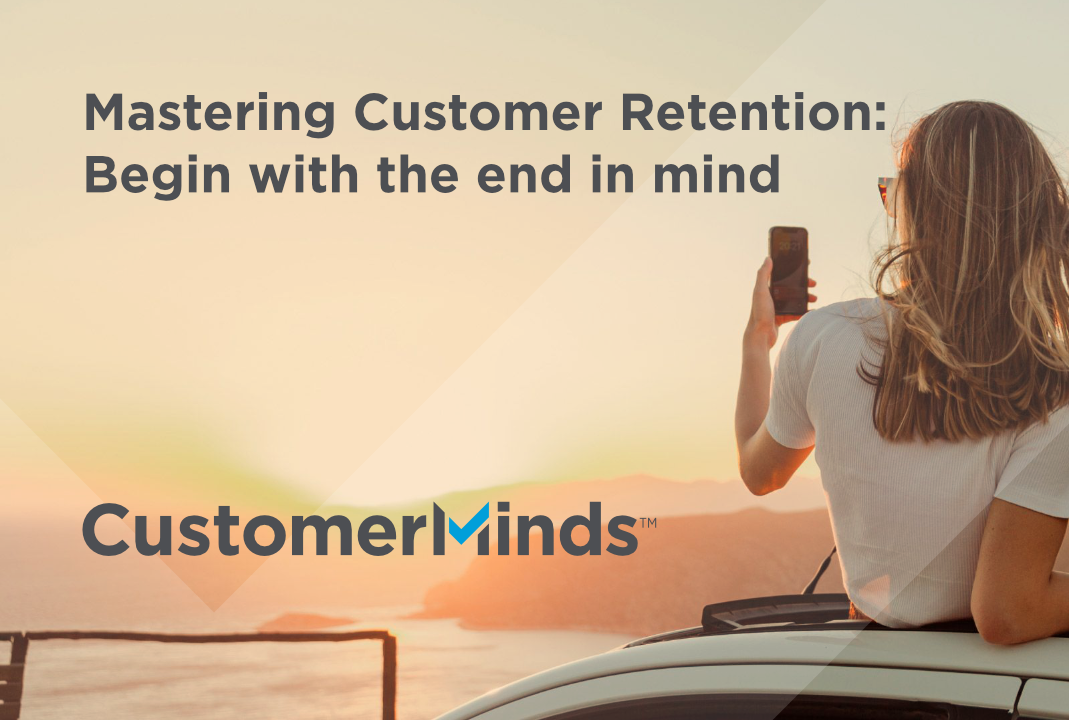Responsive By Design – Creating Great Mobile Experiences
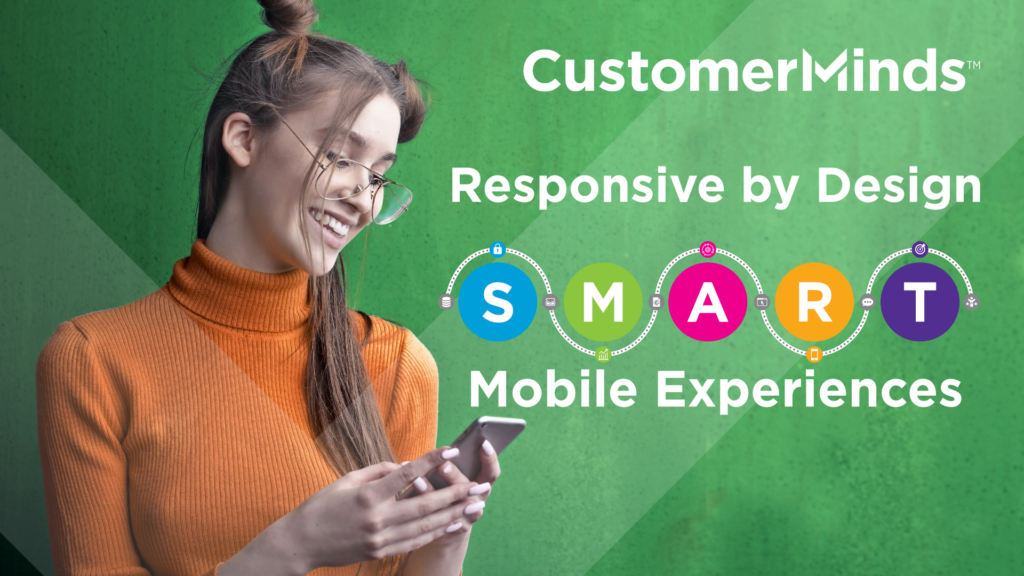
In today’s fast-paced digital era, the customer journey has transcended beyond traditional boundaries, becoming more dynamic and integrated with everyday technology. Central to this evolution is the undeniable importance of the smartphone devices, which are to be found in the hands of over 85% of the world’s population.
As we delve into the transformative world of digital customer experiences, it’s crucial to highlight the role of mobile-responsive design and that is the focus of this our fourth post in the SMART Customer Journey series where we will take a brief look at 5 Key Considerations for delivering a great mobile experience to customers in services sectors like banking, telco and utilities.

1. The Importance of Designing for Mobile in Customer Communication
The digital age has seen a seismic shift in how customers interact with their service providers. A significant facet of this interaction is the growth in the user of smartphones worldwide, For example, in 2022, there were almost 7 billion smartphone users worldwide – indicating that 86% of the global population use a mobile device to go online and mobile internet traffic accounts for almost 60 percent of total web traffic.
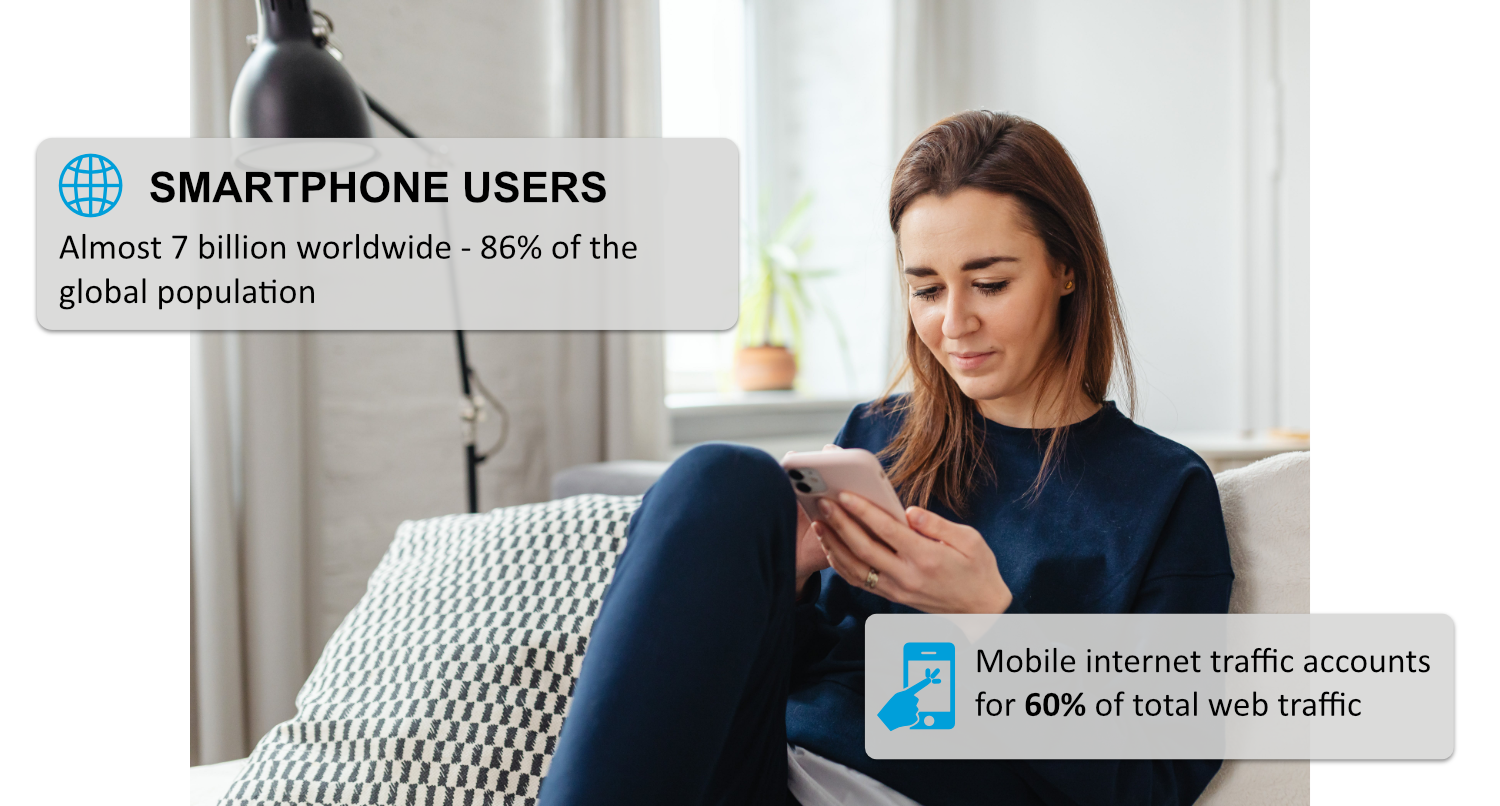
These statistics are more than just numbers; they represent a clarion call for service providers in the banking, telco and utility sectors to prioritise mobile-responsive design in their customer communication strategies.
At CustomerMinds we understand this imperative need. Our Which50 platform is built with a mobile-first approach, ensuring that every communication sent out is optimised for the best possible experience on a smartphone. This means not only adapting to screen sizes but also having the ability to dynamically change text and graphic content to suit the varied user interface and usability standards of different devices.
2. Limitations of Mobile Apps for Customer Communication
The Challenges of App and Notification Fatigue
While mobile apps have become a common strategy for customer engagement, they come with their own set of challenges and potential limitations that need to be considered when planning an effective customer communication strategy.
App fatigue is real; the average smartphone user has 80 apps but uses only nine daily. Moreover, convincing a customer to download an app is a hurdle, with concerns over storage and data privacy.
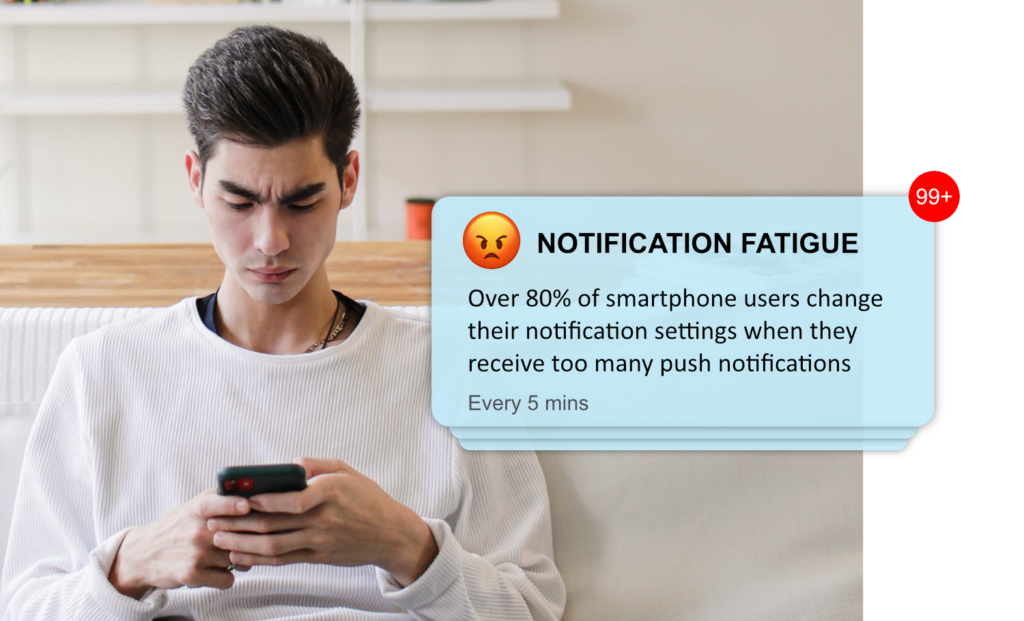
Another ‘fatigue’ that is becoming increasingly common is the growing frustration with notifications. Users are bombarded with a myriad of alerts and messages daily, leading many to disable app notifications entirely. In fact, data from Statista shows that over 80% of smartphone users change their notification settings when they feel they are receiving too many notifications. This behaviour negates one of the primary benefits of apps in establishing direct and immediate communication with users. This presents a stark challenge: how do service providers maintain a line of communication that’s both effective and respectful of the user’s attention?
Which50 addresses this issue by providing options for customer notifications, allowing for smarter, behaviour-driven messaging that respects user preferences and reduces the likelihood of opt-outs. Our platform ensures that only the most relevant and timely communications reach the customer on their preferred messaging channel, enhancing engagement without overwhelming them.
Lack of Agility with Mobile Apps
Another issue facing mobile apps is the lack of speed and agility in updating and adding new customer journeys. Traditionally, any significant update or addition to a mobile app requires a series of development cycles, quality assurance testing, and app store approvals. This process can take months (or longer if your project is not top of the ‘to-do’ list for the development team), creating a significant delay in responding to emerging customer needs or market changes.
For instance, if a bank wants to introduce a new loan application journey, the time it takes to update the app could result in lost opportunities and customer dissatisfaction. This is where Which50’s NoCode platform provides a significant advantage. The NoCode Designer allows in-house teams to create and modify customer journeys with drag-and-drop simplicity, significantly reducing time-to-market for new features and updates. This agility ensures that service providers can adapt quickly to changing customer expectations and maintain a competitive edge.
The new loan application journey can be embedded into the existing mobile app as well as being available as a standalone ‘web app’ that can be accessed from any mobile device (and PC obviously) at any time.
3. ‘Mobile By Design’ – NoCode Designer
‘Mobile By Design’ is more than a buzzword; it’s a philosophy that prioritises mobile considerations at every step of the digital design process. In the context of customer journeys, this means creating experiences that are not just mobile-friendly but conceived with mobile use as the primary consideration.
Which50’s easy-to-use No-Code CMS Designer epitomises this approach. It allows non-technical staff to create and deploy mobile-responsive designs effortlessly. This democratisation of design means that all customer-facing teams across the business, regardless of their size or technical capabilities, can craft customer journeys that are perfectly suited for mobile use.
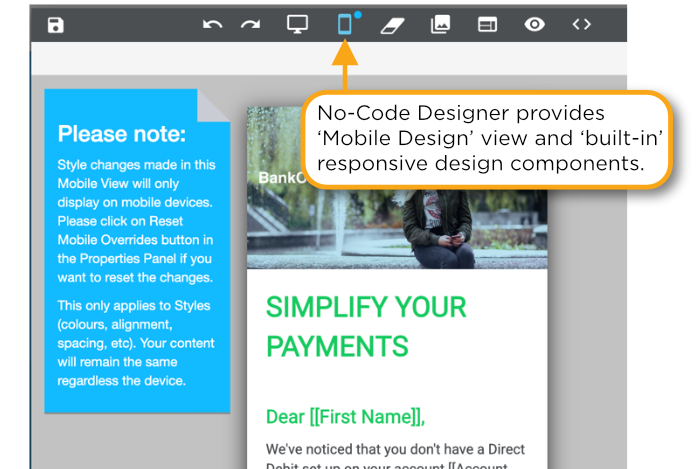
For example, with just a few clicks you can easily choose to Show or Hide certain graphics or text on a mobile device – enabling you to optimise the impact of your content on both mobile and desktop devices.
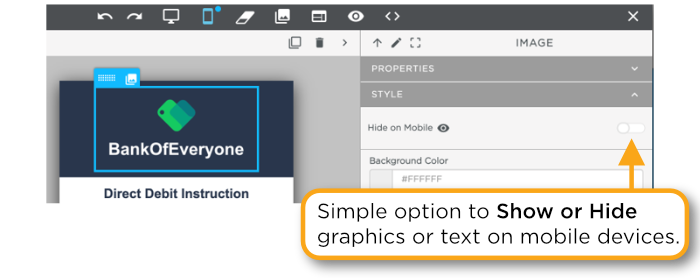
4. Multi-Channel Messaging Options
In a world where customer preferences vary widely, flexibility in communication channels is key. Which50 integrates a variety of mobile messaging options including SMS, WhatsApp, Messenger, and Push Notifications. This diversity enables businesses to tailor their communication strategies to suit their customers’ preferences.
For instance, SMS remains a powerful tool for reaching customers directly, with open rates as high as 98%. Meanwhile, apps like WhatsApp and Messenger offer rich, interactive experiences and have grown in popularity in recent years with WhatsApp now having over 2 Billion users worldwide and Messenger over 931 Million users. Push Notifications can be excellent for timely reminders and updates and can contain links to webforms that are embedded in the Mobile App as described under point 2 above. Another benefit of these new channels is that they provide a more secure environment for sharing links as the customer can feel confident that the links are genuine and come directly from the service provider via their Mobile App or their official WhatsApp or Messenger channel.
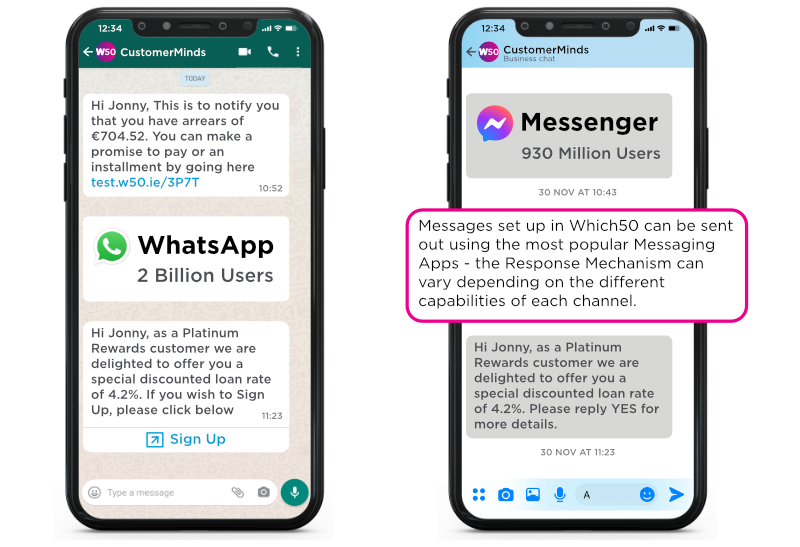
5. Use Mobile Phone as a Scanner for Documents and QR Codes
The smartphone has evolved into a multi-functional device, with one of its key capabilities being its potential use as a scanner, allowing customers to easily scan and upload documents directly through their phones. This functionality can be particularly relevant in sectors like banking and utilities, where the need to capture and upload documents is frequent.
This DocUpload feature enhances the digital experience by offering the customer convenience and speed at the same time streamlining the typical acquisition and digital onboarding process for servicing teams.
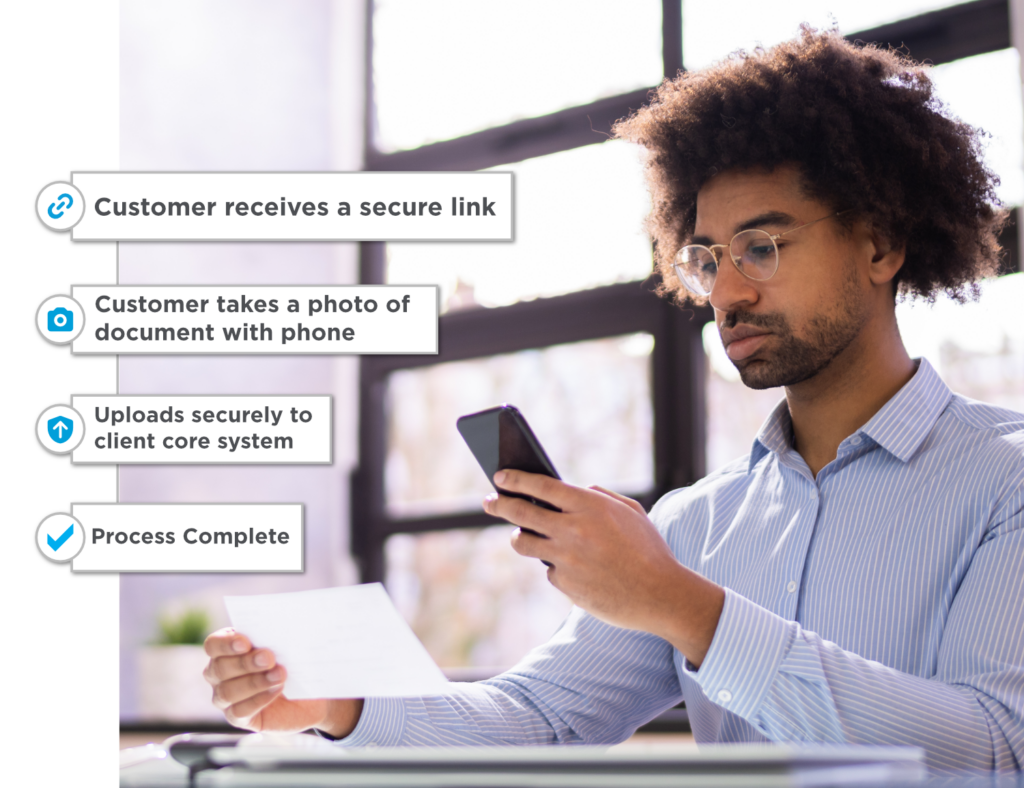
The mobile phone can also be a really useful scanner for QR Codes which can take the customer to secure online portal where they can update their details or upload additional documents required for a particular onboarding or servicing journey.
Conclusion – Embrace the Mobile Revolution
In conclusion, the rise of mobile has not just transformed customer expectations; it has rewritten the rules of digital engagement. As we move away from traditional customer service channels towards a world where digital is the default, it’s essential for service providers to adopt a ‘Mobile By Design’ philosophy. Through innovative NoCode solutions, multi-channel messaging, and innovative features like DocUpload, Which50 ensures that your customers’ digital interactions are as effortless and efficient as their use of a smartphone in their daily lives. Embrace the mobile revolution with Which50, where every customer journey is an opportunity to connect, engage, and delight.
To read each post in our SMART Customer Journeys series, visit the links below:
Get SMART about your Customer Journeys
S – 5 ‘Data SECURITY’ Considerations for Customer Engagement
M – 5 Steps to MEASURABLE Success in Customer Engagement
A – Is For AUTOMATION – the Beating Heart of SMART Customer Journeys
R – 5 Key Considerations for Delivering a Mobile RESPONSIVE Experience to Customers
T – Targeting the Segment of One: Transforming Customer Experience with Hyper Personalisation
 LOG IN
LOG IN

